How to protect Welders from hazardous fumes
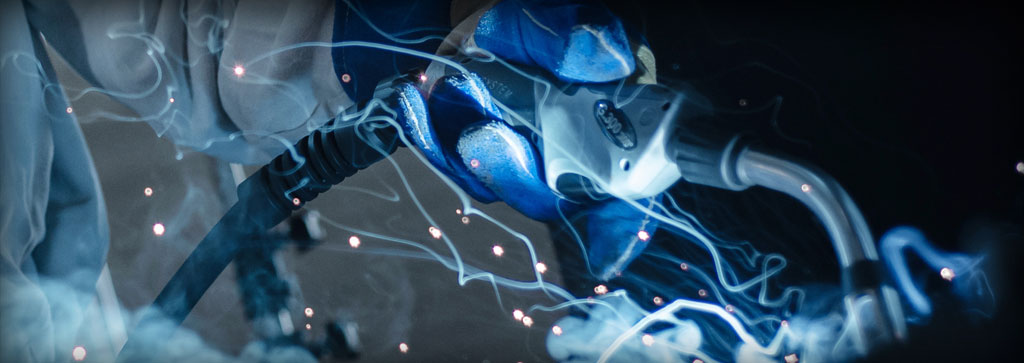
Metal Fabrication Supplies offers four simple steps to help you protect the workforce from hazardous welding fumes!
One single welder can produce up to 40 grams of fume every hour. This means that over 12 months, a welder could produce about 35-70 kilograms per year. Welding fumes are generally made up of particles formed from the filler material and the actual material being welded. The fumes are produced when a metal is heated to above its boiling point, the vapors then condense when they reach the cooler atmosphere. Whilst cooling they take the form of very fine particulates, many of these can be in the nanoparticle range and can remain in the air for up to 24 hours. These very fine particulates are made up of a variety of metals, which include aluminium, arsenic, beryllium, lead, and manganese. Also often present during the welding process are gases such as Argon, nitrogen, carbon dioxide, carbon monoxide, and hydrogen fluoride. The particles created during the welding process are mostly smaller than 1 µm. When these nanoparticles are inhaled the natural human filters such as the cilia or nose hairs, are unable to filter these out. They can then pass to the inside of the lungs and air sacs and into the bloodstream.
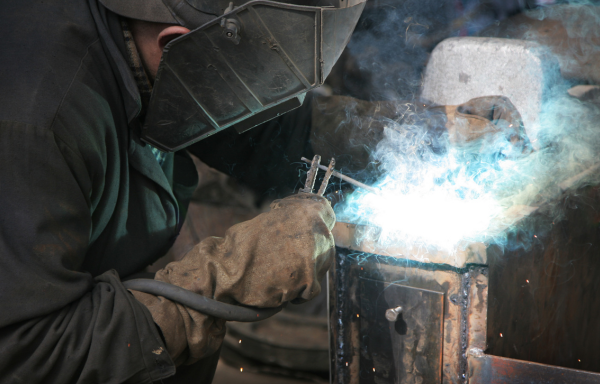
Must businesses or individuals who carry out welding activities on a day-to-day basis, should by now be aware of the HSE’s (Health and Safety Executive) announcement way back in February 2019. With immediate effect, there was a strengthening of HSE’s enforcement for the control of all types of welding fume, including mild steel welding. The new legislation also revised the classification of mild steel welding fumes to carcinogenic, which could contribute to a rise in lung and kidney cancers. The manganese content which is also present in mild steel welding fume, has been linked to neurological effects which can be similar to Parkinson’s disease.
Regardless of where or how long you may weld for, the health and safety executive will no longer accept any welding to be undertaken without suitable extraction systems in place, as there is no known safe exposure level. The new legislation states that all companies should have suitable engineering controls in place (Local Exhaust Ventilation, or LEVs) for controlling fume exposure because general ventilation does not achieve the necessary controls required. When LEVs on their own are not adequate, then the appropriate respiratory equipment should also be provided, even for welding outdoors.
Even though the HSE guidelines have been in place for quite some time, many companies have still not yet managed to come up with adequate solutions to ensure that they have full compliance. Working with our customers we have come up with four simple ways to help reduce the amount of welding fumes in the workplace.
Step 1. EVO Wires – help to reduce the amount of fumes created during the welding process.
EVO 2 & 3 welding wires are a range of un-coppered welding wires that not only perform much better than a premium copper coated, but they eliminate the negative aspects of copper wire. They also contribute to a healthier environment in and around the workplace thanks to their low welding fume emission. Some European Health authorities are advocating the use of copper-free wires wherever possible to help improve the safety of the workplace.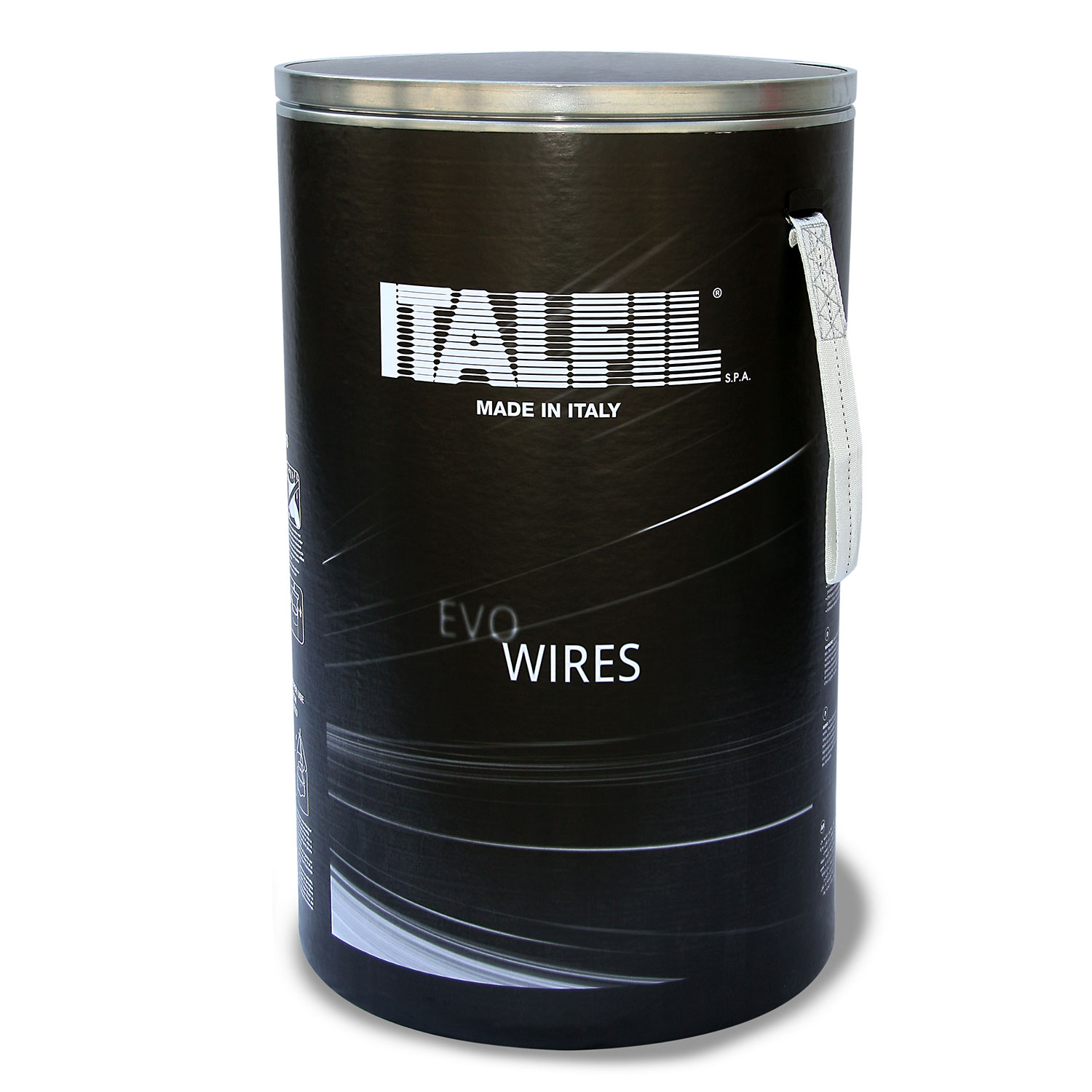
During tests carried out at the Italian Institute of Welding, two welding wires with the same diameter and from the same batch were tested. The only difference between the two wires was the type of surface coating. One of the wires was a premium copper coating wire and the other was an EVO un-coppered wire. The tests were carried out in accordance with EN ISO 15011-1. The results showed a reduction in the rate of welding fumes from the EVO wire by around 8%. The welding fume analysis from the EVO wire also showed a 292% reduction in the emission of copper, reducing the amounts in the welders environment from 0.373 mg to 0.095 mg.
Not only does the EVO wire help with the reduction of fume it also offers the following additional benefits;
-
Rapid ignition of the welding arc.
-
A smooth stable and uninterrupted arc, through excellent conductivity.
-
Significant reduction in welding spatter increasing welding times by reducing welder clean-up times
-
A reduction in the presence of silicates on the weld.
-
Excellent aesthetic quality of the weld bead.
-
Smooth wire feed ability even with bulk packs and long conduits.
-
Constant stick-out prevents the wire from sticking to the contact tip.
Step 2. Trafimet fume on-gun extraction torches – help to eliminate most fumes at source.
In the past using fume extraction welding torches has often been impractical, they were often restrictive due to the physical size and weight of the torches. They could also cause porosity problems in the weld if the protective shielding gas was extracted away when welding into corners or other tight spaces. Despite these issues fume extraction torches do have a very clear advantage over most other extraction systems available on the market. This is because they extract directly at the point at which the fume is created, the welding arc. Welders can continue to weld normally and for longer periods without the need to stop and adjust the position of an exhaust arm and hood.
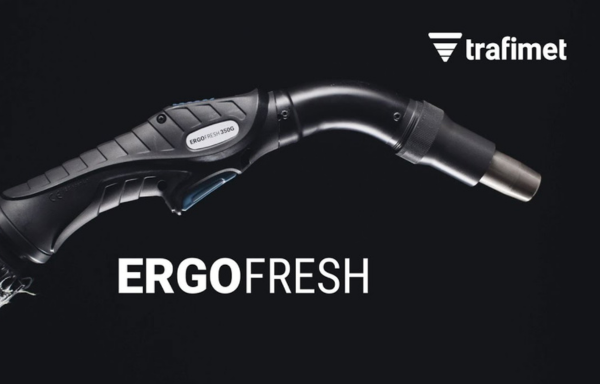
The Trafimet fume extraction torches have been designed specifically for fume extraction and alleviate most of the problems previously associated with fume extraction torches. The Trafimet fume extraction torches have specially designed solutions that guarantee efficient welding fume removal, directly at the source without affecting the protective gas shield. The Trafimet torches are much lighter with improved ergonomics and even better performance. The much smaller handle helps with grip, and the rotating swivel joint at the rear of the handle helps to reduce operator fatigue.
The Trafimet Ergofresh has been designed to help satisfy the demand for better welding safety and also eliminate the problems welders often encounter with traditional fume extraction torches. The extraction efficiency for all of the Trafimet Ergofresh models has been measured according to new ISO 21904 standard. Under this standard, the Trafimet Ergofresh removed up to 94% of welding fumes directly as they were generated and well before they reached the welder’s breathing area. With the Trafimet Ergofresh range of fume extraction MIG torches, a welder and their colleagues now have the possibility of breathing clean air created during the welding process, rather than the contaminated air normally created during the welding process.
The Trafimet Ergofresh consumables are extremely robust and offer the maximum in performance with an extremely long service life. With the exclusion of the gas nozzles, the Ergofresh consumables are also compatible with Trafimet Ergoplus range of torches. The Ergofresh nozzle and vacuum nozzle (welding without the vacuum nozzle must be prevented) can be replaced separately and these parts help fulfill the requirements of ISO 21904.
Watch the video below to see the benefits of Trafmet Ergofresh Fume Extraction torches.
Step 3. Selecting the correct LEV (Local Extraction system) – can also help reduce fumes in the workplace.
If a fume-on-gun system is impractical for your applications, then the selection of the right LEV (Local Exhaust Ventilation) system is critical. This ensures welders and other employees who could be exposed to hazardous welding fumes are protected by capturing a high percentage of fume locally. Unfortunately faced with a lack of information or options, purchasing decisions on which system to buy are sometimes based on the cost or availability, rather than any specific due diligence undertaken by the company. This can sometimes lead to LEV systems that are inadequate for the specific process and fume source(s) causing the exposure, or alternatively, the LEV system(s) are simply not used at all. The long-term running costs on some cheaper units can also be considerably greater.
Advantages of LEV
-
A Properly positioned and suitable LEV unit will capture the majority of welding fumes at the source and help protect employees from exposure.
-
The general supply/exhaust ventilation air volume can be reduced as it is not relied upon to dilute contaminants.
-
Ensures Compliance to the latest Health and Safety Executive recommendations for the elimination of welding fume.
-
The extraction of welding fumes from the surrounding environment also leads to greater employee satisfaction and wellbeing.
Disadvantages of LEV
-
If the LEV is incorrectly placed, contaminants can be drawn into both the operators’ breathing zone and also the application.
-
Emissions drawn into the system must be disposed of safely and without adverse effects on the environment.
-
It is an additional system to operate and maintain; otherwise, it could become an exposure and/or fire hazard.
-
Employees must be properly trained in the system’s correct use, to ensure its effectiveness.
-
Yearly checks, maintenance, and records are required.
Metal Fabrication Supplies has aligned itself with Kemper who has been providing optimum safety and employee protection in the workplace for more than 40 years. Kemper offers a wide range of products from mobile extraction systems, and smart filter units to effective room ventilation with tailor-made extraction solutions for the metalworking industry. Kemper welding fume extraction systems and extraction units offer some of the highest levels of protection, reliability, quality, and lowest running cost solutions available. Whether extraction solutions are a mobile extraction unit wall-mounted filter unit or supporting workplace ventilation, they must have a periodic and thorough examination test (at least every 14 months) these records must be kept for at least 5 years, In addition, you should have information on the installed LEV system to confirm it provides adequate protection, which should be kept for the life of the equipment. It is also essential that the operator is fully trained to appreciate why the fume extraction equipment is there and how it should be used to get the required protection.
KEMPER has the right solution for most situations, including High-vacuum Extraction, Mobile Filter Units, Stationary Extraction Systems, Exhaust Arms and Fans, Central Extraction Systems and General Ventilation Systems.
High-vacuum extraction units can be used for individual workplaces, or units for groups of up to four workplaces, right up to systems for welding torch extraction in large welding shops. In addition to torch-integrated welding fume extraction, the units can also be equipped with slot nozzles or funnel nozzles for the collection of pollutants directly at the source.
Mobile filter units from KEMPER are used for welding fume extraction and depending on the model, can be suitable from occasional right through to permanent use. Mobile extraction units are particularly flexible due to their high mobility and operating radius of 360 degrees and contain disposable filters from 13 m² to 42 m². Mobile extraction units with self-cleanable filters are also available, these become very economical to run due to long-lasting capacity filters. A mobile extraction unit with W3 IFA certification and a separation efficiency of 99% is needed for reliable and safe extraction of welding fumes for high-alloy steels. With the reclassification of mild steel welding fume to carcinogenic, then an extraction unit with W3 IFA certification is highly recommended. Air that has been filtered by W3 IFA-certified equipment can then be returned to the environment.
Stationary extraction units are ideal for workplaces with fixed working positions or booths around the workshop. These wall-mounted extraction units can be fitted with exhaust arms up to 7m and are particularly suitable for production areas when space-saving is required. These stationary extraction units offer a choice between devices and include features such as large-capacity disposable filters with a contamination-free filter change, this type of unit easily handles applications with medium amounts of smoke and dust.
With its differential pressure-controlled, automatic filter cleaning system, this stationary welding fume extraction unit is suitable for non-stop operation and has very low operating costs. The KemTex® ePTFE membrane filter cartridges are designed for ultra-fine dust particles, below 0.1 µm.
Exhaust Arms and Fans are often used for extracting or ventilation anywhere where the filtration of the contaminated air is not essential and they are generally vented into the atmosphere outside. Central fans can be the right solution whenever large volumes of contaminated air need to be moved. Welding fume exhaust kits consisting of various-length boom, exhaust arms with hoods and fan, it is a particularly simple and cost-effective solution. It is suitable for high levels of smoke and dust such as welding fumes, gases, vapours, light dust or vehicle exhaust fumes in non-stop operation.
Central Extraction Systems are compact welding fume extraction units that are equipped with filter cartridges, these are suitable for setting up central extraction systems. For example, welding shops, grinding shops, training facilities, robot lines or operations at extraction tables. Due to the W3 certification of many variants, the systems are also approved for the processing of chrome-nickel steel and other carcinogenic welding fumes.
General Ventilation Systems, whether displacement or mixed ventilation system: workshop ventilation or room ventilation for welding fumes is more than just a supplement to spot extraction. It also ensures the health and safety of surrounding workplaces. Kemper offers standalone solutions such as the CleanAirTower as well as complex general ventilation systems using ducting systems. General ventilation systems also improve the indoor climate by constantly circulating the air. KemJET is a central ventilation system for workshops where local exhaust ventilation systems may not be feasible or it can used to supplement such systems. It effectively protects employees and machinery from fine dust. The heated, purified air remains within the room so that during winter heat from the heating system is retained. Using this system very large energy cost savings can be made, up to 70 percent savings can be made heating the workplace. AirWatch continuously monitors the air quality in workshops and warehouses, using an optical, laser-operated measuring method. The measured values (including the number and size distribution of the fine dust particles) are stored in the cloud and can be accessed via mobile phone and can be displayed and evaluated anywhere on a PC, smartphone, or tablet. An LED-illuminated traffic light system (green, yellow, red) on the AirWatch itself indicates the air quality in the workshop.
Step 4. Selecting the right RPE (Respiratory Protective Equipment).
Where engineering controls alone have not been adequate to eliminate welding fume exposure, then suitable RPE may also be required to fully protect welders from exposure to any residual welding fume. However, it should only be used after all other reasonable and practicable measures have been implemented. Under the Control of Substances Hazardous to Health (COSHH), RPE should be the last line of protection. Any RPE used at work should be CE marked to confirm it has been designed to meet at least the minimum requirements laid out in law, with an APF (Assigned Protection Factor) of at least 20 for welding fume protection. However, employers are responsible for selecting the right RPE for their task, the substance being protected against, the work environment, and also the wearer.
An effective program of training and maintenance (except Disposable Respirators) for any RPE is also required to help ensure the equipment continues to provide an adequate degree of protection to its design level. Therefore, the manufacturer’s maintenance schedule should always be followed. Maintenance may include cleaning, examination, replacement, repair, and testing, the wearer must be able to carry out simple maintenance tasks, but more intricate repairs should be carried out by a competent person or repair centre. Some of the most common forms of RPE used to protect welders from welding fumes include disposable respirators, reusable respirators with Particle filters, powered air-purifying respirators with hoods and helmets, and supplied air regulators with hoods and helmets.
Disposable half mask respirators FFP3
Advantages
-
No maintenance, cleaning, or COSHH records are required.
-
Generally cheaper purchase price than longer lasting RPE, in the short term.
-
Generally, they will fit under most welding helmet makes.
-
Very lightweight.
Disadvantages
-
The user must undergo a face fit test before the mask is worn for the first time.
-
Fit tests must be repeated for each model of respirator used and should any physical changes occur that could affect the fit of the respirator seal to the face.
-
Not compatible with any user with facial hair, a perfect fit cannot be achieved.
-
Increased heat retention and stuffiness can often make them very uncomfortable to wear.
-
They often cause some resistance to the airflow, meaning the wearer has to breathe somewhat harder to draw a full breath at normal speed.
-
Continuous wear time of less than 1 hour.
-
Additional RPE equipment is required for welding applications.
-
Not one size or type fits all.
-
Dispose of masks marked NR after a single 8-hour shift, this makes disposable respirators a very expensive solution long term.
Reusable Respirators with replacement P3 Particle filters.
Advantages
-
A respirator is not disposable and can be fitted with replaceable filters and pre-filters.
-
More filter-type options are available.
-
Various size options for user comfort and fit are available.
-
Moderately low unit purchase cost.
-
Lightweight.
Disadvantages
-
The wearer must undergo a face fit test before the mask is worn for the first time.
-
Fit tests must be repeated for each make of respirator used and should any physical changes occur that could affect the fit of the respirator seal to the face.
-
Not compatible with any user with facial hair, a face fit test cannot be carried out.
-
During welding applications increased heat retention and stuffiness can often make them uncomfortable to wear.
-
May not fit underneath all makes of welding helmets.
-
Maintenance, cleaning, and COSHH records are required.
-
Continuous wear time of less than 1 hour.
-
Additional RPE equipment is required for welding applications.
-
During long periods of welding, regular filter and pre-filter replacement can mean expensive operating costs long term.
-
Not one size or type fits all.
Powered Air Purifying Respiratory (PAPR) with hoods and helmets
Advantages
-
Greater levels of welder protection available, up to TH3 can be achieved.
-
During welding applications, the increased cooling effects, help to reduce stuffiness and ensure the user greater comfort even during the warmest of welding applications.
-
No breathing resistance through the constant flow of clean air, ensures the user suffers less fatigue, and leads to increased production.
-
No fit testing is required and will accommodate limited amounts of facial hair.
-
A full range of head top options are available for welding & grinding, including hard hat versions.
-
One size fits all, no need for different types of respirators.
-
Additional filter types can also be fitted for protection against awkward smells, ozone plus some hazardous or toxic gases.
-
Continuous wear time for periods longer than one hour.
-
Extremely low filter usage makes PAPR units one of the most cost-effective options of RPE long term.
Disadvantages
-
Increased weight.
-
A higher initial purchase cost.
-
Maintenance and user training are required.
-
Needs filter cartridges that are specific to the contaminants.
-
Not recommended for use in really confined spaces.
Supplied Air Regulator with hoods and helmets
Advantages
-
Maximum contaminant versatility and greater levels of welder protection are available.
-
During welding applications the air can be chilled offering a cooling effect, this helps to reduce stuffiness and ensures the user greater comfort even during the warmest of welding applications.
-
No breathing resistance through the constant flow of clean air, ensures the user suffers less fatigue, leading to increased production.
-
No fit testing is required and will accommodate limited amounts of facial hair.
-
A full range of head top options are available for welding & grinding, including hard hat versions.
-
One size fits all, no need for different types of respirators.
-
Continuous wear time for periods much longer than one hour.
-
No filters are to be purchased or changed.
-
No batteries to charge.
-
Can be used in really confined spaces.
Disadvantages
-
Requires a dedicated clean-breathing air compressor.
-
It is a legal requirement for all relevant UK employers to conduct breathing air quality tests to ensure the safety of their employees. In the UK, EN12021 advises that samples should be taken and analysed at least every three months or more frequently if there has been a change in, or any concerns relating to the production process.
-
The system needs to be attached to airline.
-
Increased weight
-
Initially a higher unit cost.
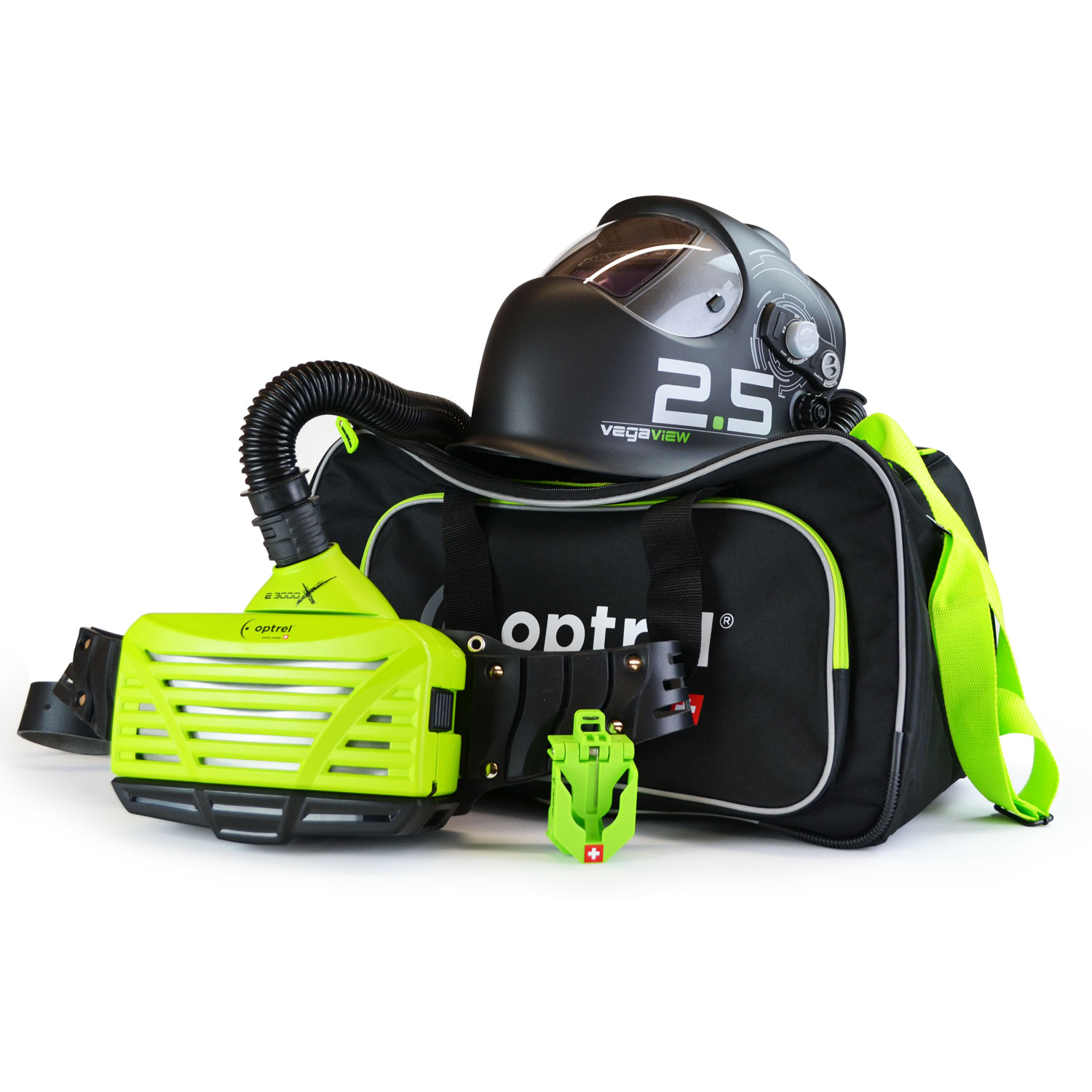 PAPR systems and Head tops, are probably the most popular tried and tested form of RPE supplied to welders for protection against welding fume. When selecting a PAPR system for filtering against hazardous welding fumes, we would recommend only one protection class to be considered, the best: TH3! When compared with the widely available, lower-cost TH2 systems, the e3000X TH3-certified breathing protection system filters out 10x more particulates out of the air. In other words, 99.8% of the harmful particles are filtered out, delivering breathing air that has become cleaner by a factor of up to 500.
PAPR systems and Head tops, are probably the most popular tried and tested form of RPE supplied to welders for protection against welding fume. When selecting a PAPR system for filtering against hazardous welding fumes, we would recommend only one protection class to be considered, the best: TH3! When compared with the widely available, lower-cost TH2 systems, the e3000X TH3-certified breathing protection system filters out 10x more particulates out of the air. In other words, 99.8% of the harmful particles are filtered out, delivering breathing air that has become cleaner by a factor of up to 500.
But if that is not enough the Optrel e3000X also offers many more benefits when compared to other lower priced systems. The significant savings on pre-filters and master filters usage over its lifetime results in e3000x offering the lowest Total Cost of Ownership over its lifetime.
The e3000x offers three individually selectable air flow levels, level 1 delivers as much as 170 litres of filtered clean air per minute. While other PAPR units reach their maximum performance level at 210 litres of air per minute, the e3000X is only at stage 2 at this point. If you use the e3000X at level 3, it delivers an unrivaled 240 litres of fresh air per minute which will provide the user with a pleasant cooling effect – especially in warmer working conditions.
The Optrel breathing protection systems are designed for professional use ensuring the user the maximum TH3 protection. For this reason, tailor-made helmet & breathing protection combinations are available for welding and grinding applications. These can be combined to form the perfect system using various filter and accessory options.
To complement the Optrel e3000X PAPR system Metal Fabrication Supplies offers the following PAPR helmets and grinding visor. These help us to create the ideal welding & grinding packages.
Ready to weld packages available:
For a full look at our Welding PAPR Packages click here.
The Optrel PAPR helmets are some of the lightest auto-darkening helmets on the market. The helmet’s ergonomic design minimises strain on the user’s head and neck, ensuring maximum comfort throughout the workday.
The Sophisticated inner mask within the Optrel helmets evenly distributes the airflow to the mouth. In addition, 20% of the airflow can be diverted to the forehead giving a pleasant cooling effect during arduous applications.
The Optrel Vegaview 2.5 Welding Helmet and Optrel Crystal 2.0 Welding Helmet open up a whole new visual experience to the user when in a light state. The much brighter view of the working environment increases both safety and efficiency in the workplace.
The Optrel Panoramaxx offers up to a 6 times larger field of view when compared to standard welding helmets, but is still a lightweight at only 550g. It also offers a rechargeable power-pack, meaning changing batteries is no longer necessary.
Auto Pilot, adaptive protection level control sets the right protection level automatically. This is achieved by an additional brightness sensor which measures the intensity of the welding arc. This means that the user is perfectly protected at all times, no matter which parameters you are welding at. Manual adjustments are no longer necessary and the incorrect protection levels are a thing of the past.
True Colour Filters – Optrel optimizes the view of colours in many of the helmets with an unprecedented view of realistic colour, enabling welders to easily see LEDs on welding devices without raising their welding helmets.
With Optrel’s Crystal Lens Technology (CLT), you can see where the weld needs to start and where it ends. You can see grains and marks on the workpiece during welding. No more annoying interruptions to check the position of your welding torch. For the first time in the history of welding, the welder sees the joining. How the weld pool melts, and how the weld seam is created. You can see how the filler material is immersed in the welding pool and gain complete control over your work.
The Clear vision of the CLT lens helps to boost increased productivity by up to 30% due to fewer work interruptions, superior welding results and less rework.
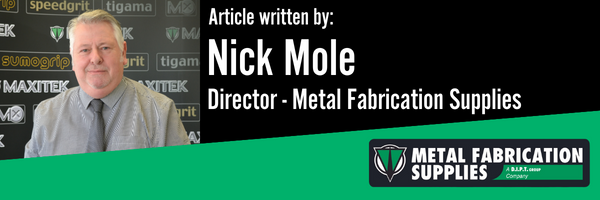
FREE SITE VISITS: To arrange a no-obligation consultation and site survey, simply complete the form below. Alternatively, if you would like to talk to us, why not give us a call us 03452 60 30 50
*Required.

